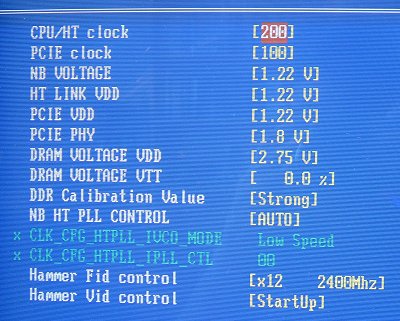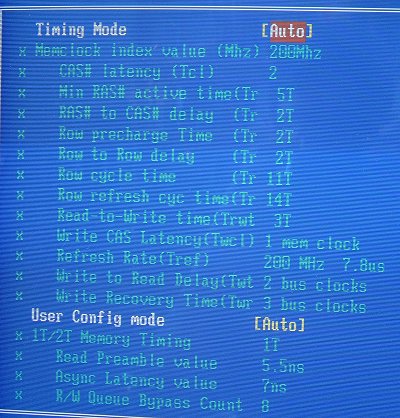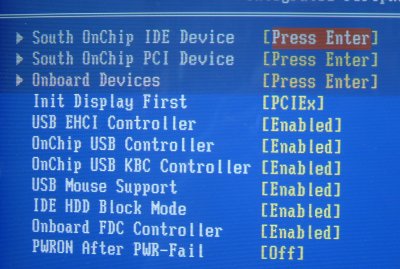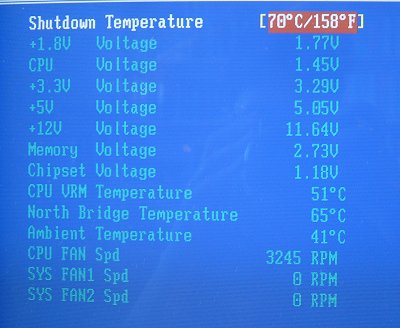BIOS
BIOS

ATI-based motherboards have often fallen down with respect to enthusiast BIOSes. SAPPHIRE's looks innocuous on first glance.

There's an extensive degree of tweaking available on the PI-A9RX480. Rather than discuss the possible ranges in each section, a table will suffice.
| HTT clock | 200-440MHz in 1MHz increments |
| PCIe clock | 100-200MHz in 1MHz increments | NB voltage | 1.22v, 1.32v, 1.4v, 1.5v | HT Link VDD | 1.22v, 1.29v, 1.39v, 1.5v | PCIe VDD | 1.22v, 1.29v, 1.39v, 1.5v | PCIe PHY | 1.8v, 1.9v | DRAM Voltage | 2.5v-4.0v in 0.05v increments | DRAM Voltage VTT | +/- 10.2% | Multiplier Factors | 4x-25x | CPU voltage | 0.825v-2.15v |
There's voltage adjustment for just about every conceivable facet here, including bumping up PCI-Express ASIC's. We wonder just why you'd want more voltage pumping through Silicon Image's controller. HTT clock and PCI-Express clock adjustment is impressive, yet DDR and CPU voltages limits are downright extraordinary. 4.0v DDR matches the highest we've seen on an unmodified motherboard; just make sure you have adequate cooling. 2.15v Vcore for S939 CPUs is also extremely generous. We'd have liked SAPPHIRE to note, in the BIOS itself, that the higher voltages can, and most probably will, cause component damage without excellent cooling. This is probably the widest range of voltages and MHz adjustment we've seen thus far, and the sample board applied reasonably strong voltages to most lines, suggesting that a true 4.0v was possible.
That's not to say that the rest of the BIOS is lacking. SAPPHIRE uses a general BIOS that has options pertaining to onboard graphics.

You can tweak DDR timings to your heart's content. Given the array of options open to the enthusiast, we feel that a BIOS-saving feature is an absolute must. Unfortunately, it's not implemented on the sample's B1-4M BIOS. We hope to see it in production models. Maximum memory clock is limited to DDR400 at 200MHz HTT, but Revision E models, thanks to an improved on-chip memory controller, can be set to DDR500.

No-one appears to use onboard jumpers to toggle features on/off these days, and, expectedly, you can toggle just about everything from within the PURE Innovation's.

The use of a passive northbridge heatsink pushes RX480's temperature to an alarmingly high state. What's worrying is that the temperature reported is for a default-clocked motherboard, that is, with a 200MHz HTT clock and 1.22v. We applaud SAPPHIRE's excellent voltage adjustment but wonder if overclocking wouldn't be helped further by the use of a heatsink-mounted fan.
An excellent BIOS in most respects, one designed for the enthusiast in mind.









